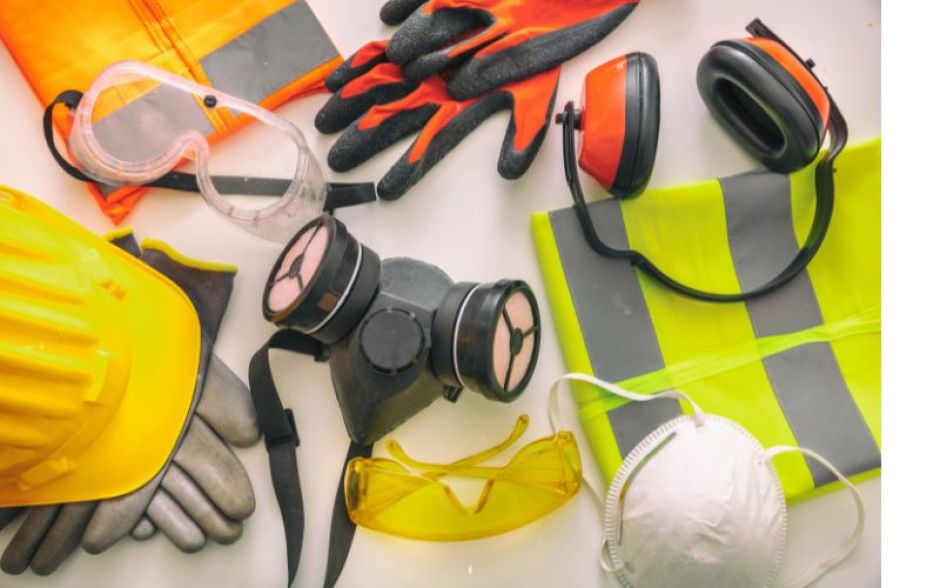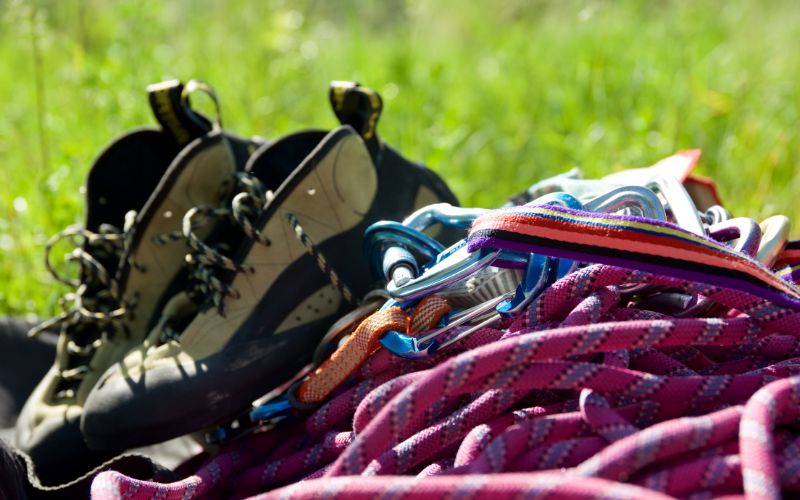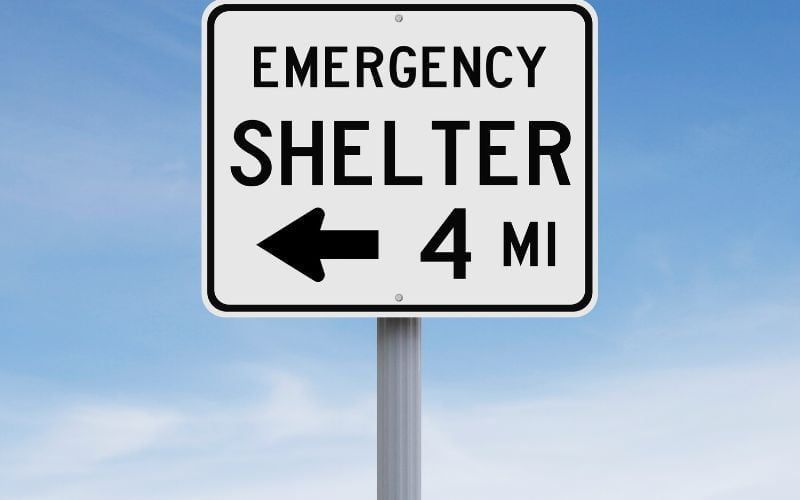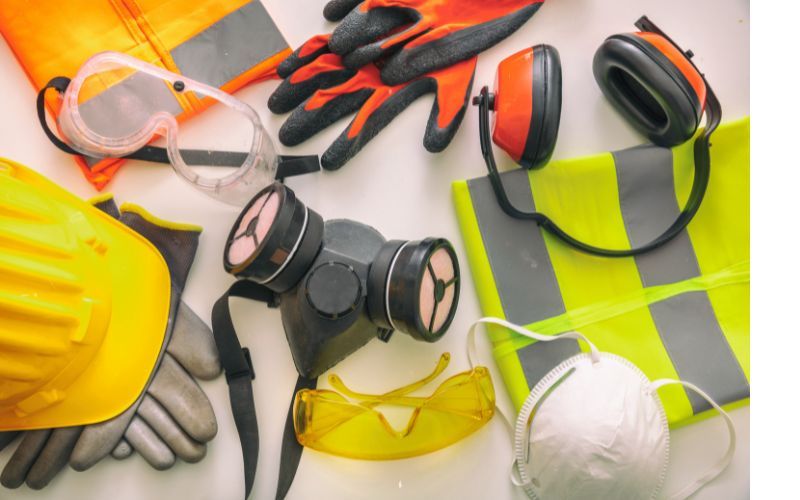
Protective Gear : Safeguarding Lives in Hazardous Environments Super 2023
In a world marked by diverse risks, from workplace hazards to outdoor adventures, Protective Gear stands as the first line of defense, shielding individuals from harm and ensuring their safety. As a vital sub-category of Safety & First Aid, Protective Gear encompasses a wide range of equipment and attire designed to safeguard lives in hazardous environments.
This comprehensive guide delves into the world of Protective Gear, exploring its significance across various domains, showcasing the diverse types available, and providing expert insights on choosing the right gear to mitigate risks effectively. Whether you’re a construction worker, an outdoor enthusiast, a healthcare professional, or someone who values personal safety, understanding Protective Gear and having the appropriate gear at your disposal is essential for minimizing risks and maximizing protection.

Table of Contents
The Significance of Protective Gear – Protective Gear
The significance of Protective Gear extends far beyond mere attire; it embodies a commitment to safety, preparedness, and the preservation of life. Here’s an in-depth look at why Protective Gear holds paramount importance in diverse environments:
- Occupational Safety: In industrial and construction settings, Protective Gear plays a pivotal role in safeguarding workers from a range of hazards, including falls, impacts, chemical exposure, and extreme temperatures. This gear ensures that workers can perform their tasks with reduced risk of injury or illness.
- Healthcare and Infection Control: In the healthcare sector, Personal Protective Equipment (PPE) is critical for infection control. During pandemics and infectious disease outbreaks, healthcare professionals rely on PPE such as masks, gowns, and gloves to protect themselves and prevent the spread of pathogens to patients and colleagues.
- Outdoor Adventures: For outdoor enthusiasts, Protective Gear provides a safety net during activities like hiking, biking, rock climbing, and skiing. Helmets, goggles, body armor, and other gear mitigate the risks associated with these adrenaline-fueled pursuits, reducing the likelihood of injury.
- Emergency Response: First responders and emergency personnel rely on Protective Gear to carry out their duties safely in high-risk scenarios. This gear includes flame-resistant suits for firefighters, hazmat suits for handling hazardous materials, and bulletproof vests for law enforcement.
- Sports and Recreation: In the world of sports, Protective Gear is a game-changer, minimizing the impact of collisions and falls. Football helmets, cycling helmets, mouthguards, and padding are examples of gear that enhance safety in athletic endeavors.
- Extreme Environments: Protective Gear is essential for individuals who work or venture into extreme environments, such as arctic conditions or scorching deserts. Insulated clothing, heat-resistant suits, and cold-weather gear protect against extreme temperatures and weather conditions.
- Safety Culture: Beyond the physical protection it offers, Protective Gear fosters a culture of safety and responsibility. It instills the importance of precautionary measures and reminds individuals to prioritize safety in their actions and decisions.
- Lifesaving Potential: Protective Gear has the potential to save lives. Helmets can prevent head injuries, respirators can filter harmful airborne particles, and life vests can keep individuals afloat in water emergencies.
- Regulatory Compliance: In many industries, compliance with safety regulations and standards is mandatory. Protective Gear ensures that businesses and individuals meet these requirements, avoiding legal repercussions and liability.
- Peace of Mind: Perhaps one of the most significant benefits of Protective Gear is the peace of mind it provides. Knowing that you are well-equipped to handle potential risks and hazards enhances mental and emotional well-being.

In summary, Protective Gear is more than just equipment; it is a commitment to safety and preparedness. It serves as a shield against a myriad of dangers, ranging from physical injuries to infectious diseases. Whether in the workplace, outdoor adventures, healthcare settings, or emergency response, Protective Gear is a symbol of responsible risk mitigation and a tangible means of ensuring personal safety and the safety of others.
Types of Protective Gear – Protective Gear
Protective Gear encompasses a wide range of equipment and attire, each tailored to mitigate specific risks and hazards. Here’s an in-depth exploration of various types:

Head Protection:
- Helmets: Protect against head injuries in sports, construction, and outdoor activities.
- Hard Hats: Essential for construction workers to safeguard against falling objects.
- Bike Helmets: Specifically designed for cyclists to reduce the risk of head injuries.
Eye and Face Protection:
- Safety Glasses: Shield the eyes from impacts, debris, and chemicals.
- Goggles: Provide a secure barrier against chemical splashes and airborne hazards.
- Face Shields: Cover the face entirely for protection against splashes and impacts.
Respiratory Protection:
- Masks: Filter out particles, dust, and infectious agents.
- Respirators: Offer more advanced filtration for hazardous environments.
- SCBA (Self-Contained Breathing Apparatus): For firefighting and hazardous material handling.
Body Protection:
- Coveralls: Full-body protection against chemicals, contaminants, or biohazards.
- Body Armor: Protects against ballistic threats for law enforcement and military personnel.
- High-Visibility Vests: Enhance visibility in construction and roadwork settings.
Hand and Arm Protection:
- Gloves: Guard against chemical exposure, cuts, abrasions, and burns.
- Arm Sleeves: Extend protection to the forearms in industrial settings.
Hearing Protection:
- Earplugs: Reduce noise exposure in industrial and construction environments.
- Earmuffs: Provide hearing protection in loud settings, including shooting ranges.
Foot and Leg Protection:
- Steel-Toed Boots: Protect against crushing injuries in construction and heavy industry.
- Safety Shoes: Offer additional protection for the feet in various work settings.
High-Visibility Apparel:
- Safety Vests: Enhance visibility in low-light conditions, particularly in construction and roadwork.
Environmental Protection:
- Chemical Suits: Full-body suits for protection against chemical spills and biohazards.
- Thermal Suits: Insulated clothing for extreme cold or hot conditions.
Fall Protection:
- Harnesses and Lanyards: Prevent falls from heights in construction and industrial work.
- Safety Nets: Catch falling workers and equipment.
Medical and Healthcare PPE:
- Masks (N95, surgical): Prevent the spread of infectious diseases.
- Gowns: Protect healthcare workers from exposure to bodily fluids.
- Gloves: Ensure infection control during patient care.
Sports and Recreational Gear:
- Cycling Gear: Includes helmets, gloves, and padded clothing.
- Protective Pads: Used in sports like skateboarding, rollerblading, and snowboarding.
- Mouthguards: Prevent dental injuries in contact sports.
Emergency Response Gear:
- Firefighter Gear: Flame-resistant suits, helmets, and self-contained breathing apparatus (SCBA).
- Hazmat Suits: Full-body suits for handling hazardous materials.
- Bulletproof Vests: Protect law enforcement and security personnel.
Extreme Environment Gear:
- Cold Weather Gear: Insulated clothing, thermal boots, and gloves.
- Heat-Resistant Suits: Protective gear for working in high-temperature environments.
Choosing the Right Protective Gear (Extended)
Selecting the right Protective Gear is crucial for ensuring maximum safety and protection in specific environments and situations. Here are the key factors to consider:

Identify Hazards:
Start by identifying the specific hazards you will encounter. Whether it’s falling objects, chemical exposure, extreme temperatures, or infectious agents, understanding the risks is essential for choosing the right gear.
Regulations and Standards:
Check industry-specific regulations and safety standards. Ensure that the gear you choose complies with these requirements. Non-compliance can lead to serious consequences, including injuries and legal liabilities.
Fit and Comfort:
Protective Gear should fit comfortably to ensure that it is worn consistently. Ill-fitting gear can be a hindrance and may not provide adequate protection. Look for adjustable features and ergonomic designs.
Durability and Quality:
Invest in high-quality gear that can withstand the demands of your environment. Cheap or subpar gear may fail when you need it most. Read reviews, seek recommendations, and opt for trusted brands.
Environmental Conditions:
Consider the environmental conditions you’ll face. Extreme heat, cold, wetness, or chemical exposure may require specialized gear designed to withstand these challenges.
Ease of Use:
Protective Gear should be easy to put on and remove. In emergency situations, quick and efficient donning of gear can be a matter of life and death.
Maintenance Requirements:
Understand the maintenance requirements of the gear. Some equipment may need regular cleaning, inspections, or replacement parts. Ensure that you can properly maintain the gear for its longevity and effectiveness.
Training and Familiarity:
Proper training in the use and care of Protective Gear is essential. Ensure that users are trained in the correct procedures for donning, doffing, and maintaining the gear.
Budget Considerations:
While quality is paramount, consider your budget constraints. Look for a balance between affordability and quality to ensure you get the best value for your investment.
Conclusion (Approx. 250 words)
Protective Gear is a testament to our commitment to safety and well-being in environments where risks and hazards abound. This gear goes beyond being a physical barrier; it represents our dedication to minimizing risks and ensuring that individuals return safely from their endeavors. In this comprehensive guide, we’ve explored the significance of Protective Gear across various domains, from occupational safety to outdoor adventures, healthcare, and emergency response. We’ve also delved into the diverse types of gear available, each tailored to specific risks and hazards. Additionally, we’ve provided insights into choosing the right gear to maximize safety and protection effectively.
Remember that Protective Gear is not a mere accessory; it’s a lifeline that empowers individuals to work, explore, and respond to emergencies with confidence. It mitigates risks, reduces the impact of hazards, and serves as a symbol of our commitment to personal safety and the safety of those around us. Whether you’re a worker, an adventurer, a healthcare professional, or someone who values safety, the right Protective Gear is your armor against life’s uncertainties. It’s a tangible means of ensuring that you’re prepared for whatever challenges come your way, and it exemplifies the adage that an ounce of prevention is worth a pound of cure.



